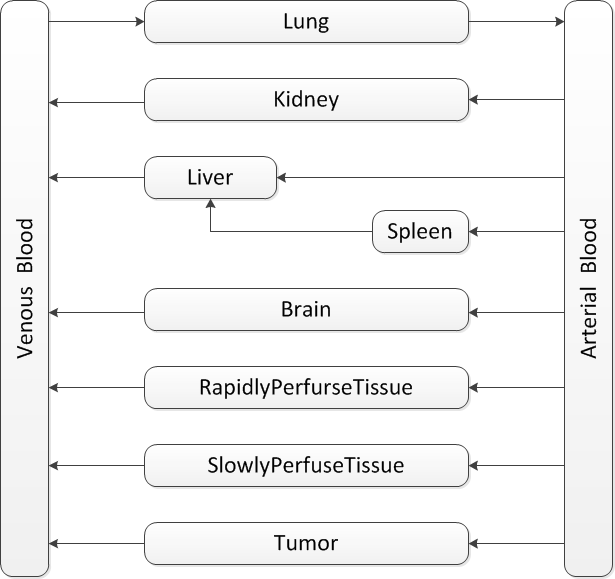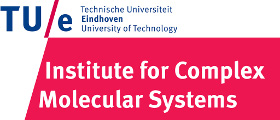Team:TU-Eindhoven/PBPK
From 2013.igem.org
(→Tissue Grouping) |
(→Tissue Grouping) |
||
| Line 30: | Line 30: | ||
In the study of J.Ren et al., they tested the tissue concentrations of several organs in mice. Based on their results, we first selected brain, kidney, liver, spleen and lung. To ensure that the blood flow sums up to total cardiac output, we then added rapidly perfuse tissue and slowly perfuse tissue. As the aim is to predict the drug concentration in tumor zone, the compartment of tumor is added to the last. | In the study of J.Ren et al., they tested the tissue concentrations of several organs in mice. Based on their results, we first selected brain, kidney, liver, spleen and lung. To ensure that the blood flow sums up to total cardiac output, we then added rapidly perfuse tissue and slowly perfuse tissue. As the aim is to predict the drug concentration in tumor zone, the compartment of tumor is added to the last. | ||
| - | + | Finally, the structure looks like this: | |
{{:Team:TU-Eindhoven/Template:Image | filename=PBPKscheme.png}} | {{:Team:TU-Eindhoven/Template:Image | filename=PBPKscheme.png}} | ||
Revision as of 08:06, 9 September 2013



Contents |
Ganciclovir Distribution
Ganciclovir is the prodrug to kill the bacteria. See the principle of killing:(). The bacteria needs to be killed at a mild rate. So it is important to predict the concentration of ganciclovir in the body, especially in the tumor zone as the bacteria gather in this site. In this part we used Physiologically based pharmacokinetic model(PBPK) to describe the distribution of the drug in different tissues of body.
Physiologically Based Pharmacokinetic Model
The pharmacokinetic model is a useful tool to predict drug concentrations in human tissues. It models 3 processes in drug consumption:
1). Absorption describes how the drug enters to blood stream via different method of administration.
2). Distribution is how the drug distributes into different human tissues.
3). Elimination is the process that the drug is eliminated from blood stream.
And all the processes are modeled with differential equations.
The essence of pharmacokinetic model is
1). Compartmental method. Different tissues in human are modeled as compartments, like lung, kidney and fat. Within the compartment, it is assumed that drug distribution is uniform. The blood flows from one compartment to another and brings the drug throughout the body.
2). Diffusion limitation. Diffusion limitation is illustrated by the speed of blood flow and the affinity of the compartment to the drug. Some organs have a higher rate of blood flow, like lung and kidney. In these compartments, the concentration will change faster. Different compartments also have a different affinity to the drug. Affinity depends on the chemical composition of the drug and the human tissue. But generally, kidney always has the highest affinity as it is the main elimination compartment.
Model Construction
The construction of pharmacokinetic model involves of several steps. Although the principle of pharmacokinetic model looks quite simple, every design of the model should be back up with good reasons.
Tissue Grouping
In the study of J.Ren et al., they tested the tissue concentrations of several organs in mice. Based on their results, we first selected brain, kidney, liver, spleen and lung. To ensure that the blood flow sums up to total cardiac output, we then added rapidly perfuse tissue and slowly perfuse tissue. As the aim is to predict the drug concentration in tumor zone, the compartment of tumor is added to the last.
Finally, the structure looks like this:

Parameter Estimation
Simulation Result
References
 "
"



